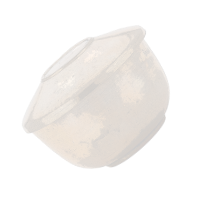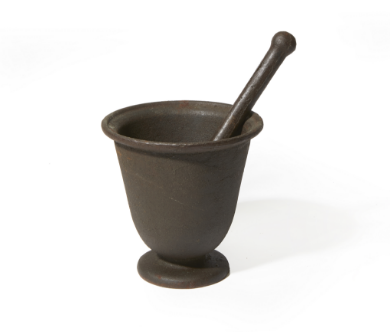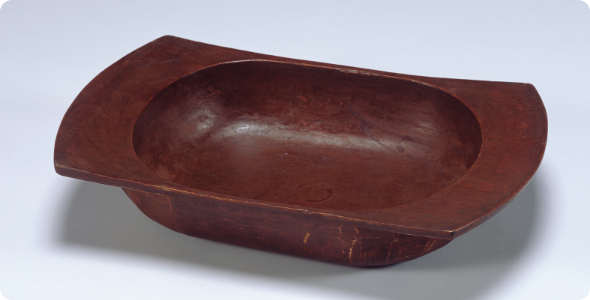





Essential Guide
to Kimjang
A Look Through Kitchen Tools






Kimchi :
The More You Know,
The Better
It Tastes!




Every year on November 22, Museum Kimchikan introduces new content in celebration of Kimchi Day. Our second series for 2024 features kitchenware used for kimjang.
In Italy, forks were introduced to make eating pasta easier. In eastern countries, where rice is the staple food, chopsticks are used, while in western countries, where bread is the staple, measuring spoons and cups are often used. In Korea, where a typical meal comprises rice, soup, and side dishes all served together, both spoons and chopsticks are used, and kimchi always has a place as one of the side dishes for its ability to balance flavor and nutrition. So, what kitchenware was used in Korea to make delicious kimchi?
How are the tools used to make kimchi in the past different from those we use today? What similarities do they share?
The Essential Guide to Kimjang is an exhibition that not only focuses on the consumption of kimchi but also highlights the process of making it. As you view the illustrations and photos, why not put together your own set of kitchenware for kimjang?
In Italy, forks were introduced to make eating pasta easier. In eastern countries, where rice is the staple food, chopsticks are used, while in western countries, where bread is the staple, measuring spoons and cups are often used. In Korea, where a typical meal comprises rice, soup, and side dishes all served together, both spoons and chopsticks are used, and kimchi always has a place as one of the side dishes for its ability to balance flavor and nutrition. So, what kitchenware was used in Korea to make delicious kimchi?
How are the tools used to make kimchi in the past different from those we use today? What similarities do they share?
The Essential Guide to Kimjang is an exhibition that not only focuses on the consumption of kimchi but also highlights the process of making it. As you view the illustrations and photos, why not put together your own set of kitchenware for kimjang?


01
Preparing kimchi cabbage
Halve kimchi cabbage by cutting
into the root and splitting it by hand.
[Tools used] Knife, Cutting board

- Name : Kitchen Knife
- Origin / Period : Korea / Joseon
- Material : Metal-Iron
- Collection : National Folk Museum of Korea

- Name : Cutting Board
- Origin / Period : Korea / Post-Liberation
- Material : Wood
- Collection : National Folk Museum of Korea
02
Salting cabbage with salted water
1.
Salt kimchi cabbage.
[Tools used] Seasoning jar, Jabaegi
1
Seasoning jar
A small jar used to store spices essential for making kimchi, such as salt and red chili powder.
1


- Name : Seasoning Jar
- Origin / Period : Korea / Unknown
- Material : Ceramic-Earthenware
- Collection : National Folk Museum of Korea
2
Jabaegi
An earthenware bowl with a wide, rounded opening, typically used to wash or salt grains or vegetables.
2


- Name : Jabaegi (bowl)
-
Origin / Period : Korea /
Japanese Colonial Period - Material : Ceramic-Earthenware
- Collection : National Folk Museum of Korea
2.
Drain salted
kimchi cabbage
rinsed with water.
kimchi cabbage
rinsed with water.
[Tools used] Sieve
3
Sieve
A type of gwangjuri that is round and flat.
During kimjang, it is used to drain excess water from salted kimchi cabbage, radish, or other washed vegetables.
Sieves are still widely used today, but contemporary ones are made from easier-to-use materials, like stainless steel.
During kimjang, it is used to drain excess water from salted kimchi cabbage, radish, or other washed vegetables.
Sieves are still widely used today, but contemporary ones are made from easier-to-use materials, like stainless steel.
Gwangjuri: a general term for large, flat baskets woven from bamboo, rattan, or bush clover
3


- Name : Sieve
-
Origin / Period : Korea /
Japanese Colonial Period - Material : Ceramic-Earthenware
- Collection : Museum Kimchikan
1


- Name : Seasoning Jar
- Origin / Period : Korea / Unknown
- Material : Ceramic-Earthenware
- Collection : National Folk Museum of Korea
2


- Name : Jabaegi (bowl)
-
Origin / Period : Korea /
Japanese Colonial Period - Material : Ceramic-Earthenware
- Collection : National Folk Museum of Korea
3


- Name : Sieve
-
Origin / Period : Korea /
Japanese Colonial Period - Material : Ceramic-Earthenware
- Collection : Museum Kimchikan
What is the name
of the tool used to
drain water from vegetables ?
of the tool used to
drain water from vegetables ?

Correct!

Sorry,
try again!
try again!
03
Making
kimchi seasoning
Mix various
ingredients to make
kimchi seasoning.
These days, blenders or mixers are preferred over dolhwak or jelogu. The main difference is that dolhwak and jelogu crush ingredients with stone, while blenders or mixers chop ingredients finely with blades. Depending on the method, some people still choose traditional tools over modern ones. Although dolhwak and jeolgu have largely lost their place in household kitchens, they are now considered professional tools used by traditional cooking experts.
As for mandoline slicers and gangpan, there are similar Western tools, like peelers, but it is difficult to achieve the same quality for preparing kimchi seasoning. The radish slices cannot be too thin or thick, as they will either become mushy or fail to ferment properly. These days, mandoline slicers and gangpan are available in modernized materials.
As for mandoline slicers and gangpan, there are similar Western tools, like peelers, but it is difficult to achieve the same quality for preparing kimchi seasoning. The radish slices cannot be too thin or thick, as they will either become mushy or fail to ferment properly. These days, mandoline slicers and gangpan are available in modernized materials.
[Tools used] Dolhwak, Maja, Seasoning Jeolgu, Mandoline slicer, Gangpan
1
Dolhwak
A tool used to grind chili peppers for kimchi. Depending on the pressure and speed applied when using dolhwak, the taste of kimchi varies.
While it is commonly used in the Honam region, it is also used in parts of Gyeongsang and Chungcheong provinces. In the Honam dialect, it is known as "Hwakdok."
While it is commonly used in the Honam region, it is also used in parts of Gyeongsang and Chungcheong provinces. In the Honam dialect, it is known as "Hwakdok."
1


- Name : Hwakdok (Dolhwak)
- Origin / Period : Korea / Post-Liberation
- Material : Stone
- Collection : National Folk Museum of Korea
Grinding garlic using hwakdok
ⓒ Museum Kimchikan
ⓒ Museum Kimchikan
2
Maja (磨子)
A tool used to grind kimchi spices like ginger and garlic.
To use it, place your finger in the groove and grind the spices against the rough surface.
To use it, place your finger in the groove and grind the spices against the rough surface.
2


- Name : Maja (grater)
- Origin / Period : Korea / Unknown
- Material : Ceramic
- Collection : Museum Kimchikan
3
Seasoning jeolgu
A small mortar and pestle used in the kitchen.
It is used to grind kimchi spices like garlic, sesame seeds, and ginger.
It is used to grind kimchi spices like garlic, sesame seeds, and ginger.
3


-
Name : Cast Iron Seasoning Jeolgu
(mortar and pestle) - Origin / Period : Korea / Unknown
- Material : Ceramic-Earthenware
- Collection : National Folk Museum of Korea
4
Mandoline slicer/Gangpan (Grater)
Used to shred vegetables like radish, and gangpan is used to grind spices to make kimchi seasoning.
4


- Name : Mandoline Slicer
- Origin / Period : Korea / Post-Liberation
- Material : Wood
- Collection : National Folk Museum of Korea
4


- Name : Gangpan (grater)
- Origin / Period : Korea / Post-Liberation
- Material : Ceramic-White Porcelain
- Collection : National Folk Museum of Korea
1


- Name : Hwakdok (Dolhwak)
- Origin / Period : Korea / Post-Liberation
- Material : Stone
- Collection : National Folk Museum of Korea
Grinding garlic using hwakdok ⓒ Museum Kimchikan
4


- Name : Mandoline Slicer
- Origin / Period : Korea / Post-Liberation
- Material : Wood
- Collection : National Folk Museum of Korea
2


- Name : Maja (grater)
- Origin / Period : Korea / Unknown
- Material : Ceramic
- Collection : Museum Kimchikan
3


- Name: Cast Iron Seasoning Jeolgu (mortar and pestle)
- Origin / Period: Korea / Unknown
- Material: Ceramic-Earthenware
- Collection: National Folk Museum of Korea
4


- Name : Gangpan (grater)
- Origin / Period : Korea / Post-Liberation
- Material : Ceramic-White Porcelain
- Collection : National Folk Museum of Korea
What is "Dolhwak"
called in the dialect
of the Honam region?
called in the dialect
of the Honam region?

Correct!

Sorry,
try again!
try again!
04
Mixing
Generously cover
kimchi cabbage with
prepared seasoning.
Kimchi, generously covered in its seasoning, is served in a bowl called bosigi.
[Tools used] Hamjibak, Jabaegi, Red plastic tub, Red rubber gloves
1
Hamjibak
A large bowl made by hollowing out the inside of a log, like a large container.
1


- Name : Hamjibak (Maehamji)
- Origin / Period : Korea / Unknown
- Material : Wood
- Collection : National Folk Museum of Korea
2
(again)Jabaegi
An earthware bowl with a wide, rounded opening, typically used to salt vegetables or prepare seasoning.
2


- Seasoning kimchi cabbage in jabaegi
ⓒ Museum Kimchikan
3
Red plastic tub and rubber gloves
The so-called "red tub" and red rubber gloves are iconically known as essential kimchi-making tools in Korea.
While the large red plastic tub was traditionally used to mix kimchi seasoning, it is rarely used today due to concerns about potential of heavy metal contamination.
These days, more hygienic and convenient alternatives, such as "kimjang mats" and disposable gloves, are commonly used.
These days, more hygienic and convenient alternatives, such as "kimjang mats" and disposable gloves, are commonly used.
3


- 2023 Kimchi Day Photo Contest Winner
Kimjang Day with Four Generations by Park Ji-yeon
ⓒ Museum Kimchikan
Kimchi, generously covered in its seasoning, is served in a bowl called bosigi.

- Name : Bosigi
- Origin / Period : Korea / Post-Liberation
- Material : Metal
- Collection : National Folk Museum of Korea

- Name : Bosigi
- Origin / Period : Korea / Post-Liberation
- Material : Metal
- Collection : National Folk Museum of Korea
1


- Name : Hamjibak (Maehamji)
- Origin / Period : Korea / Unknown
- Material : Wood
- Collection : National Folk Museum of Korea
2


- Seasoning kimchi cabbage in jabaegi
ⓒ Museum Kimchikan
3


- 2023 Kimchi Day Photo Contest Winner
Kimjang Day with Four Generations by Park Ji-yeon
ⓒ Museum Kimchikan
What is the
main usage of Bosigi?
main usage of Bosigi?

Correct!

Sorry,
try again!
try again!
Tip!
Here's what to remember
when choosing your tools
to make kimchi.
When choosing your kitchen supplies for kimjang, make sure they are labeled "food grade."
Food-grade equipment is marked with the "food grade" label or symbol on the product itself or its packaging.
The Ministry of Food and Drug Safety regulates equipment according to the standards set by the Food Sanitation Act to prevent the risk of heavy metal contamination during food handling.
Food-grade equipment/tools: refers to machines or tools that come into direct contact with food or food additives
Food for Thought
Throughout the history of food, kitchenware has not received much attention.
However, having an understanding of kitchenware is just as important as learning recipes because the tools and techniques used to prepare ingredients affect the texture, flavor, and nutritional value of food.
The tools used to make Korean dishes have evolved alongside Korean cuisine.
In the 21st century, cooking tools for Korean dishes may not be just for Koreans.
Just as homi (Korean hand plow) became known as the
"K-farming tool" and created a sensation on Amazon, the largest online market platform in the U.S., why not introduce
"K-cooking tools" to the world?
"K-farming tool" and created a sensation on Amazon, the largest online market platform in the U.S., why not introduce
"K-cooking tools" to the world?
If the tradition of kimjang—making and sharing kimchi—were to remain in the past, kimjang tools would also become relics of history.
However, if the culture of kimjang becomes known worldwide and is passed down to future generations, kimjang tools would continue to stay with us for a long time.
A representative/traditional/
unique/memorable
kitchen tool from your own country is
unique/memorable
kitchen tool from your own country is

Correct!

Sorry,
try again!
try again!

Correct!

Sorry,
try again!
try again!
Red plastic tub
Red plastic tub
and rubber gloves
and rubber gloves
Red plastic tub
Red plastic tub
Red plastic tub
Red plastic tub
Red plastic tub
Red plastic tub
Red plastic tub
Congratulation!
You have correctly answered
all quizzes!



